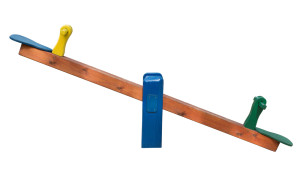Progress reports for Philadelphia schools show uneven achievement

BY COMPARISON: Far more schools in Philadelphia need intervention than are successful.
By Maura Pennington | Watchdog.org
PHILADELPHIA — The School District of Philadelphia released its School Progress Reports this week, and three times as many high schools require intervention as compared to successful “models.”
Through a grant from the Michael and Susan Dell Foundation, the district compiled data for each of its schools, including standardized test scores, progress toward graduation, school climate and post-secondary outcomes.
“The School Progress Report will be used to celebrate successes, identify areas of intervention and support, enable evidence-based decisions and strategically focus our work,” said Hite.
Six high schools were categorized as “models,” nine were marked as needing reinforcement, 12 as needing watching and 18 as needing intervention.
The profiles of schools at either extreme show the difference in the learning environments.
At the high end are Central High School in North Philadelphia and Julia R. Masterman Laboratory and Demonstration School just north of Center City, a middle and high school. Both Central and Masterman have an admissions process.
Central enrolls 2,300 students, 32 percent of whom are gifted. They are ethnically diverse: 32 percent Asian, 31 percent black, 25 percent white and 9 percent Hispanic. There are more female students than male, and 48 percent of the student population is economically disadvantaged. All students are considered college-ready based on SAT and ACT scores.
Masterman enrolls 1,100 students, 58 percent of whom are gifted. They, too, are ethnically diverse: 23 percent Asian, 25 percent black, 41 percent white and 6 percent Hispanic. The split between boys and girls is 54 percent to 45 percent. Thirty-one percent of the student population is economically disadvantaged. Everyone at Masterman is considered ready for college.
By contrast, Strawberry Mansion High School near Fairmount Park has 430 students and almost 100 security cameras. The student body is 99 percent black and 1 percent Hispanic. Every student is economically disadvantaged. There are more boys than girls. According to the state School Performance Profile, no one is considered college-ready based on the SAT or ACT. Thirty-one percent of students are in special-education programs.
William L. Sayre High School in West Philadelphia is one of Pennsylvania’s most persistently dangerous schools and is considered by federal standards as eligible for families to pick a safer school. There are 500 students enrolled, 23 percent of whom are in special education. Ninety-seven percent of students are black. The split between girls and boys is 47 percent to 53 percent.
Central offers 16 Advanced Placement courses. Masterman has 11. At Strawberry Mansion and Sayre, about half of the students graduate. On average, teachers at Central and Masterman have five years more years of experience than at Strawberry Mansion and Sayre.
They are clearly different schools.
The district has authorized the creation of three new high schools to increase the number of “high-quality seats” available to Philadelphia students, but how that will affect the disparity between the highest-performing schools and the lowest is unclear.
Contact Maura Pennington at mpennington@watchdog.org and follow her on Twitter @whatsthefracas.







